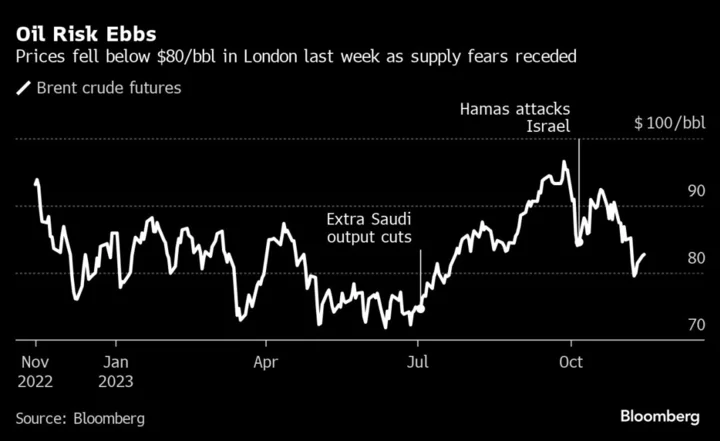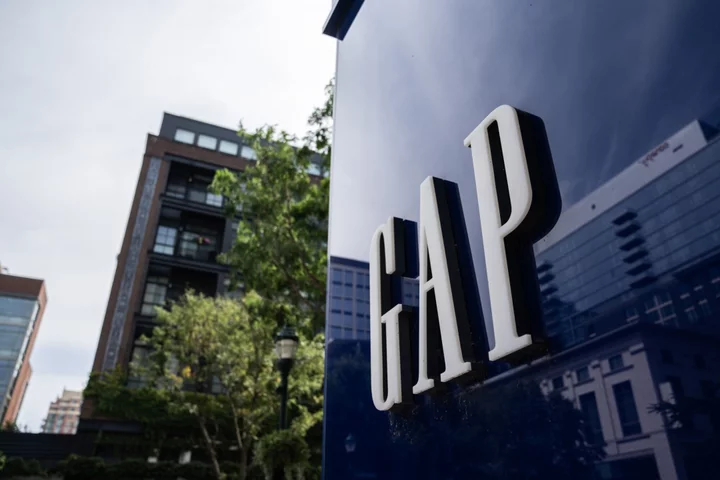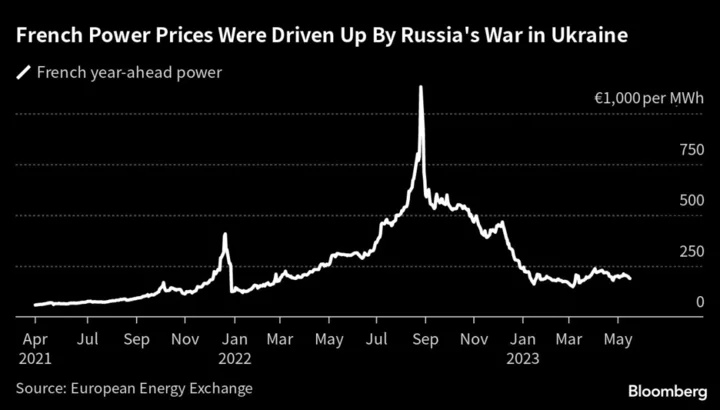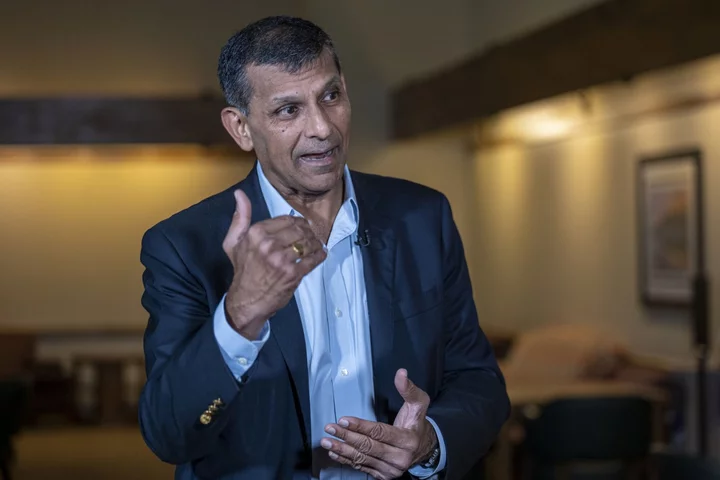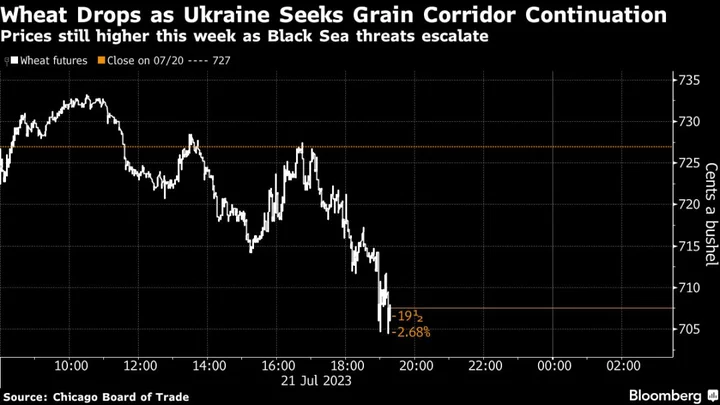The floods, heat waves, storms and fires fed by global warming are getting worse across the US and will pose increasing danger to Americans unless greenhouse gas emissions are cut sharply and swiftly. The tools to do that are available today and are being adopted by communities nationwide, although not quickly enough to avert the crisis, according to a major government report released Tuesday.
Called the Fifth National Climate Assessment, the report “is the authoritative, definitive assessment of how our country is doing on climate change,” Arati Prabhakar, the director of the White House Office of Science and Technology Policy, said ahead of the release. Not only does it make clear that “climate change is here,” she said, it also highlights how “America’s stepping up to meet this moment.”
The report comes at a time of record-shattering heat. This June, July, August, September and October were all the hottest respective months on record globally, putting 2023 on track to be the hottest year yet. All this heat is playing out in the form of devastating disasters in the US. The nation has already experienced a record-high 25 disasters this year that have generated at least $1 billion in damages each, from deadly wildfires in Maui to flooding in Vermont to Hurricane Idalia pummeling Florida. On average, according to the report, the US now experiences a billion-dollar disaster every three weeks, compared to once every four months (adjusting for inflation) in 1980, when the National Oceanic and Atmospheric Administration first started tallying records.
“The impacts of climate change are continuing to change faster than we expected them to,” Kris May, chief executive officer of Pathways Climate Institute in San Francisco and the lead author of two of the report’s chapters, told Bloomberg Green in an interview. “It’s increasing the urgency for both mitigating greenhouse gases and also implementing adaptation efforts to help us adapt, because we’re not slowing down [warming] anytime soon.”
About 2,000 pages long, the latest National Climate Assessment is the most comprehensive study of climate change’s risks to and effects on the US. Roughly 750 people wrote or contributed to this report, a mix of scientists across federal agencies and outside the government as well. This is the fifth edition released since Congress passed the Global Change Act in 1990, establishing the Global Change Research Program. The act requires the program to regularly evaluate current scientific research on climate change and present an assessment of its impacts on the country to Congress and the president. The fourth edition of the report was published in phases in 2017 and 2018.
The new report affirms prior assessments that the planet is warming at an unprecedented pace, human-caused greenhouse gases are the cause and climate impacts are a problem of the present, not just the future.
“Too many people still think of climate change as an issue that’s distant from us in space or time or relevance,” said climate scientist Katharine Hayhoe, a professor at Texas Tech University and chief scientist of the Nature Conservancy, who helped author this and previous versions of the assessment. “But NCA clearly explains how climate change is affecting us here in the places where we live, both now and in the future, and across every sector of human and natural society.”
Most everywhere in the US is affected by the extra heat trapped in the Earth system. Wildfire smoke is fast becoming a health threat on top of conventional air pollution. Forest owners and managers around the country are girding for a continuous increase in weather conducive to large fires. Sea levels along the Atlantic, Pacific and Gulf coasts are set to rise 11 inches by 2050 — about the same increase as they experienced over the entire past century.
Every region is changing in ways that present distinct challenges. California withered for more than two decades through its worst drought in more than 1,200 years, though the winter of 2022 to 2023 brought some relief. Fisheries have collapsed in Alaska. Diseases from ticks and mosquitos are on the rise in the Southeast.
In the Midwest, which is responsible for producing nearly a third of the world’s corn and soybeans, higher temperatures and more rapid oscillations between extreme droughts and floods threaten agricultural production and, by extension, the global food supply.
Markets are already absorbing the losses, and both trade and economic growth are directly impacted. This edition of the report is the first to include a chapter dedicated to economics, an exploration of both cumulative and expected future losses from greenhouse gas emissions. American households can expect impacts to property values, employment, income and quality of life.
Compared to past editions, the report places a stronger emphasis on climate justice and climate solutions and will be the first to be entirely translated into Spanish. Climate change is disproportionately harming the health and well-being of historically marginalized populations in the US, including Black and Indigenous communities. That exacerbates other community stressors such as pollution and lack of access to high-quality health care.
At the same time, steps to reduce emissions and adapt to the impacts of warming are happening around the country. Farmers in Texas and Kansas, for instance, are taking up soil management practices that prioritize carbon storage. The city of Pittsburgh updated its stormwater code last year to take heavier expected rainfall into account.
The report “is designed to provide detailed practical information for everyone,” said Prabhakar. She gave the example of how an urban planner in Texas could consult it to tell “where to locate cooling centers, so that they can create a refuge from the extreme heat that happens now.”
Weeks ahead of the global climate conference COP28 in Dubai, and with President Joe Biden Biden seeking reelection in 2024, White House officials used the report’s release to emphasize the progress the country has made on climate change since he took office in January 2021, including the passage of Biden’s landmark climate law, the Inflation Reduction Act, last year.
“The assessment shows plummeting costs for clean energy technologies, like wind and solar, and skyrocketing deployment,” said John Podesta, White House senior advisor for clean energy innovation. Since Biden took office, the private sector has invested nearly $350 billion in clean energy and green projects have created more than 210,000 jobs, Podesta said.
Speaking about the report Tuesday morning, Biden said, “It lays out the threats and dangers, but most experts would acknowledge that it also shows solutions are within reach.”
Biden criticized “MAGA Republican leaders who still deny climate change,” singling out his predecessor and likely 2024 opponent Donald Trump, whose administration made efforts to undermine the preparation of the new report.
“We’re shining a light. We’re sharing this report in detail with the American people so they know exactly what they’re facing and what we’re going to have to do,” Biden said.
The White House on Tuesday also announced the new allocation of more than $6 billion in climate spending, including $3.9 billion for the Department of Energy to modernize the nation’s electric grids and $300 million for the Federal Emergency Management Agency to help communities affected by recent flooding.
US emissions have declined since peaking in 2007, even as the country’s population and per capita gross domestic product have risen. But the US remains the world’s second-biggest emitter of greenhouse gases. Absent much deeper cuts by it and other nations, climate risks to people and property will grow. And even with significant cuts, some further warming and damages from it would be unavoidable.
“The takeaway from all of our collective work should not be doom and despair,” said Ali Zaidi, Biden’s national climate advisor, but “a sense of hope and possibilities.”
--With assistance from Justin Sink.
(Updated with Biden comments and details on new US climate spending.)
Author: Kendra Pierre-Louis, Eric Roston and Zahra Hirji


